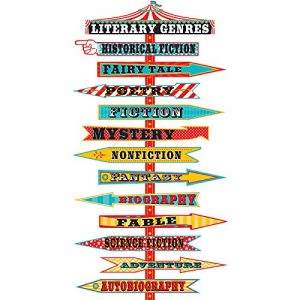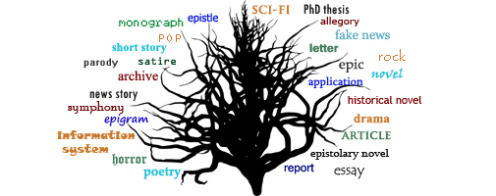Growing up in a family of avid moviegoers as well as hungry readers, my understanding of genre started when I was very young. We would watch the superhero save the day, serial killers such as Leatherface dismember bodies, and spaceships travel the stars to save the universe. This goes for what we were reading as well. My original basis of genre was built on categories such as horror, action/adventure, science fiction, etc.
When I came to college, however, my understanding of genre expanded in my creative writing classes. In high school, we never discussed poetry, nonfiction, and fiction as genres; they never really had a classification. If you apply one of the classifications (let’s say horror) to one of the genres (fiction), not only do you get the likes of Stephen King but you also get a sort of genre-based inception with layers upon layers. In the workshop classes, however, it’s a whole different story. And–as Christina mentioned in her latest post–genres such as horror, young adult, and fantasy have no place in the workshop and sometimes people are steered away from writing what they find interesting.

After doing these readings, my idea of genre hasn’t really evolved; I would say it shifted. It’s not just whether or not something is written like a poem or a short story, rather it is how something is written to interact with an audience. Digital genres add to that idea of a shift in genre because there’s just so many of them. We are no longer stuck with writing simply poetry or short stories; now we can find different ways to talk about numerous subject matters. (Think of a beauty vlog and how it would not be the same thing if you were following a set of written instructions instead of watching someone walk you through it.) In Writer/Designer: A Guide to Making Multimodal Projects, the authors write “Generally speaking, audiences expect something from newspapers that they do not expect from movies…This traditional understanding of genre help us recognize how to group similar texts and understand their communicative purpose” (63). We are constantly working with genres, such as blogs and YouTube videos, to find the best way to reach the audiences that we want as well as the best way to showcase what we are talking about. In “Generalizing about Genre”, Amy Devitt mentions “genres develop, then, because they respond appropriately to situations that writers encounter repeatedly” (Devitt 576). With the invention of the internet, more people were able to take what they’ve been writing for newspapers (i.e. opinion columns) and place them online for more people to view.
With all of that in mind, I’ll probably be taking my interest in poetry and adapting it to these digital genres and exploring the concept (and craze) that is Twitter Poetry.
Word Count: 467
Works Cited:
Ball, Cheryl E. et al. Writer/Designer: A Guide to Making Multimodal Projects. 2nd ed., New York, Bedford/St. Martin’s, 2018.
Devitt, Amy J. “Generalizing about Genre: New Conceptions of an Old Concept.” College Composition and Communication, vol. 44, no. 4, 1993.
